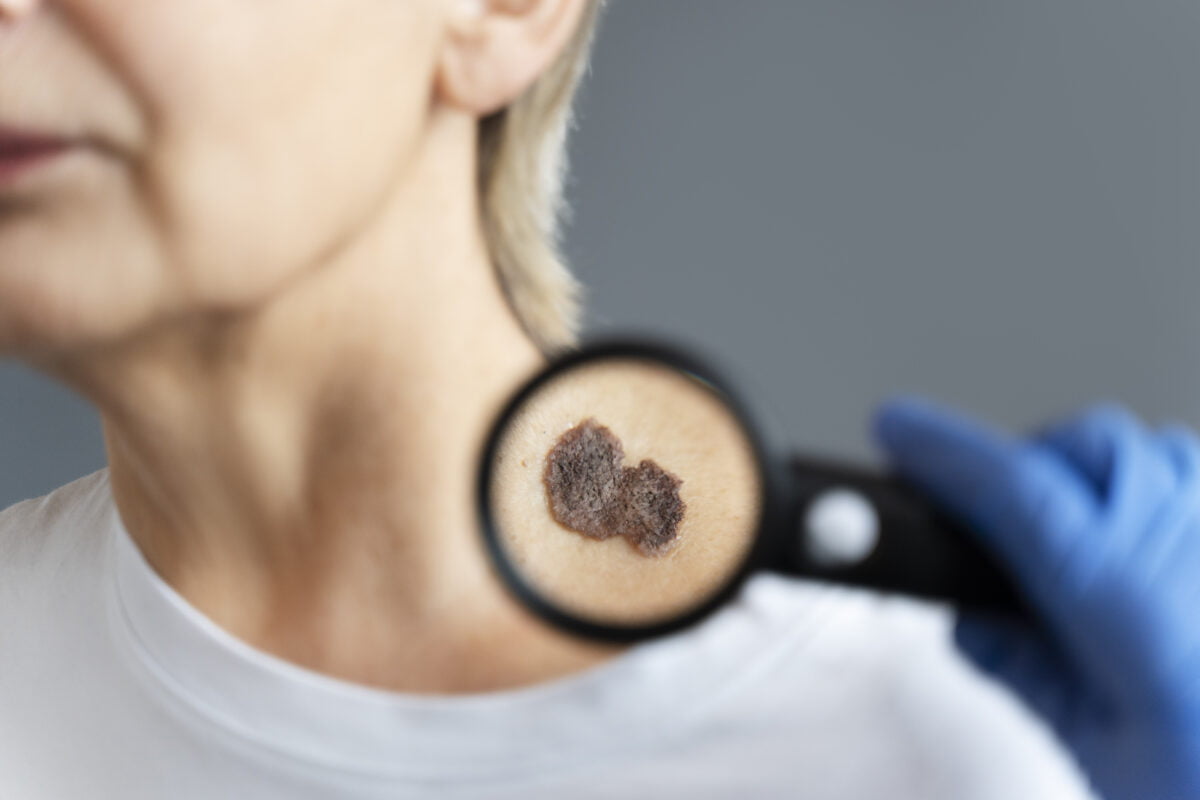Health
What Does Skin Cancer Look Like? Type and Symptoms
Did you know the number of skin cancer patients globally is estimated to reach around 30.2 million in 2040 compared to 19.2 million in 2020? There are various types of skin cancers, and each varies in its symptoms and risk factors.
However, the most prominent signs of skin cancer may include:
- An unhealed sore
- A changing form of a mole
- Constant itching on a particular skin area
- An unusual spot
What does Skin Cancer Look Like?
Let’s discuss how skin cancer can be diagnosed by its appearance.
Melanomas
Melanoma is the most severe type of skin cancer, estimated to affect around 197,700 people in the US in 2022. It can spread rapidly to nearby cells, which increases its risk factors.
Melanoma may be usually visible in the form of asymmetrical lesions with different shapes, colors, or sizes. They may have uneven, notched, crusting, or bleeding edges, usually with a diameter of 6mm or more.
Squamous Cell Cancers
Approximately 1.8 million people are diagnosed with Squamous Cell Cancers (SCC) every year. Squamous Cell carcinoma is mostly found on sun-exposed skin surfaces in the form of flaky scars, open sores, warts, or red patches.
The color of the SCC exposed area may be red, pink, or brown and may also feel like shiny, waxy scars with no definite borders. The signs of SCC may cause extreme itching, pain, or even bleeding on the scars or open sores. Moreover, these areas become difficult to heal and grow exponentially.
Actinic Keratosis
Skin Cancer Foundation reveals that almost 58 million Americans got affected by the signs of Actinic Keratosis. They are precancerous, scaly dry patches of skin caused by sun damage which can ultimately turn into cancer if left untreated.
Actinic Keratosis may be pink, red, white, or dark tan, depending on the patient’s skin tone. Due to having a rough texture, they are easier to feel and diagnose. The signs of actinic keratosis may appear on the sun-exposed skin surfaces such as the head, face, arms, or neck.
Basal Cell Cancers
Basal Cell Carcinoma (BCC) is the most frequently occurring form of cancer, with an estimated 3.6 million cases in the US each year. BCC is most commonly caused by DNA damage that happens due to the sun’s ultraviolet radiations or tanning beds. Resultantly, alterations in basal cells of the epidermis occur, causing uncontrolled cell growth.
BCC appears as red shiny skin patches, scars, or open sores which may itch or bleed, depending on the severity of the disease. However, the signs may vary from person to person.
Self Examination for Skin Cancer Signs
Checking your skin regularly may help you identify any unusual signs that may lead to cancerous outgrowths. For this purpose, using the ABCDE rule is the best way:
Asymmetry: A mole or outgrowth doesn’t show definite symmetry with equal halves.
Border: An undefined border around the mole or suspected lesion.
Color: A solid color of the spot different from the surrounding skin.
Diameter: The size of the suspected mole or outgrowth larger than pea-size.
Evolving: Constantly forming new moles or changing the appearance of already present forms.
Bottom Line
The signs and symptoms of skin cancer vary from person to person. It’s recommended to consult your doctor urgently if you feel any unusual signs for an early diagnosis and quick recovery.

